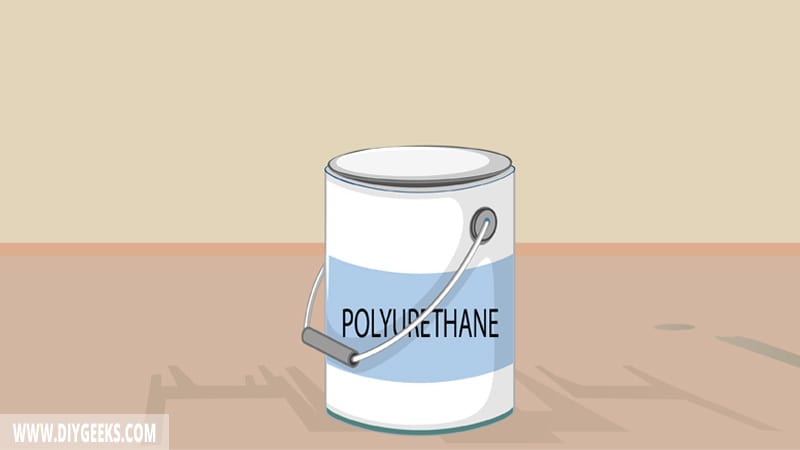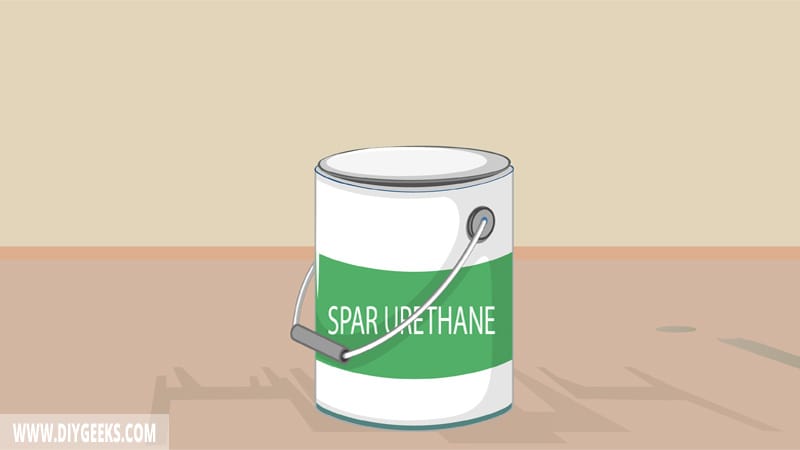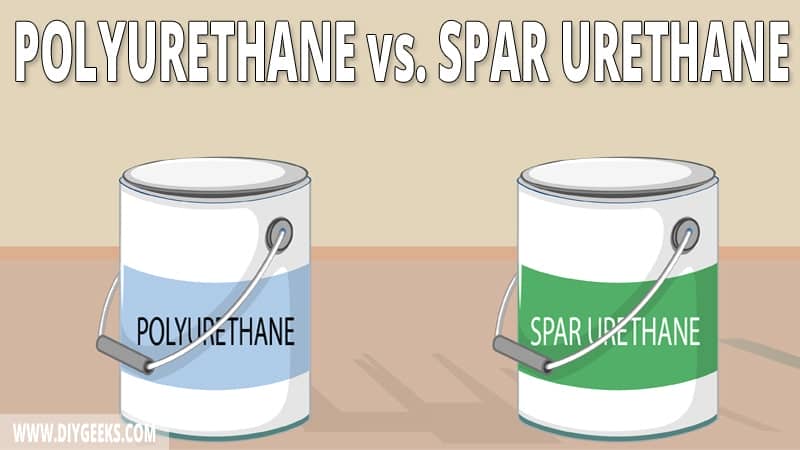Polyurethane is a protective sealer that forms a moisture-resistant layer over surfaces. Spar urethane is a protective sealer used for exterior surfaces that are exposed to high water amounts, such as boat vessels.
Polyurethane is easier to apply, has fewer oils on its formula, and costs less than spar urethane. Spar urethane is more durable, has better water resistance, and protects surfaces better than polyurethane.
What is Polyurethane?

Polyurethane is a plastic-like sealer that creates a moisture-resistant layer (or barrier) and protects surfaces from moisture, water, scratches, and weather elements.
It creates a high-gloss finish that reflects light and highlights surface imperfections. However, it’s available in different sheens, such as flat or semi-gloss.
Polyurethane has a plastic-like finish that is flexible and contracts and expands based on temperature changes. It’s used for interior and exterior surfaces.
There are two polyurethane types; water-based and oil-based. Both have the same formula except for the solvent (water or oil).
What is Spar Urethane?

Spar urethane is a protective finish used for exterior surfaces that are exposed to high water amounts, such as boat wooden spars.
It has impressive water-resistant and UV-resistant qualities and creates a flexible finish that contracts or expands based on temperature changes.
You can use spar urethane for interior surfaces, but its amber-like finish isn’t suitable for surfaces that need a clear finish. You can apply it with a paintbrush or sprayer, and you must apply multiple coats for proper coverage and durability.
Polyurethane vs Spar Utherane
The differences between polyurethane and spar urethane are listed below.
Application
Spar urethane is harder to apply than polyurethane as it has a thicker viscosity, is harder to control, and can leave brush marks.
However, you can apply both sealers with a paintbrush or sprayer.
Oil Amount
Spar urethane has more oils and solvents than polyurethane which creates a softer finish that is more flexible. Polyurethane also has a high oil amount on its formula.
Durability
Spar urethane is more durable than polyurethane as it’s a fortified sealer, thrives over all surface types, and can handle moisture and dents.
The polyurethane finish is also strong and lasts long.
Interior or Exterior Use
You can use polyurethane over interior and exterior surfaces as it forms a moisture-resistant layer (barrier) that protects surfaces from moisture, water, and weather elements.
You can use spar urethane over interior and exterior surfaces, but the sealer is more suited for exterior surfaces exposed to high water amounts as it creates a finish that’s resistant to water and weather elements.
Paint Cost
Spar urethane is more expensive than polyurethane.
Ideal Paintbrush
To apply polyurethane you need a bristled or foam paintbrush. To apply spar urethane, you need a bristled paintbrush.
Spar urethane can create brush marks if you use a foam or non-bristled paintbrush to apply it.
Paint Thinning
You must thin spar urethane before applying, but you don’t need to thin polyurethane unless you want to. Spar urethane has a thicker viscosity and must be thinned before applying.
Water-Resistance
Spar urethane has better water resistance than polyurethane as the sealer is designed for deck, hulls, or boat surfaces that are exposed to high water amounts.
Polyurethane offers good water-resistance qualities, but not as good as spar urethane.
Dry Time
Spar urethane dries than polyurethane as it dries through oxidization which starts immediately after you apply the sealer.
Polyurethane has a longer dry time as it dries through solvent evaporation. Water-based polyurethane takes around 6-8 hours to dry between coats, while oil-based polyurethane takes around 24 hours.
Related Read: Polyurethane vs Varnish?
Which One Do You Need?
Before you decide which sealer to use, check the following things.
- Budget: Use polyurethane if you have a lower budget as the sealer costs less.
- Interior or Exterior Surfaces: Use water-based polyurethane for interior surfaces and spar urethane for exterior surfaces exposed to high water amounts.
- Durability: Use spar urethane if you need a more durable finish.
- Experience: Use polyurethane if you don’t have experience on applying sealers.


